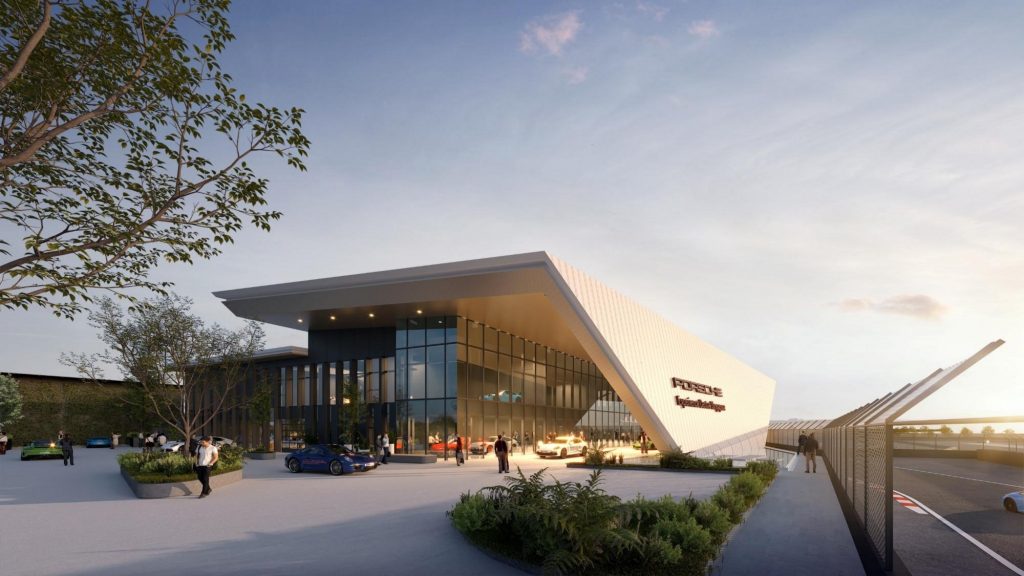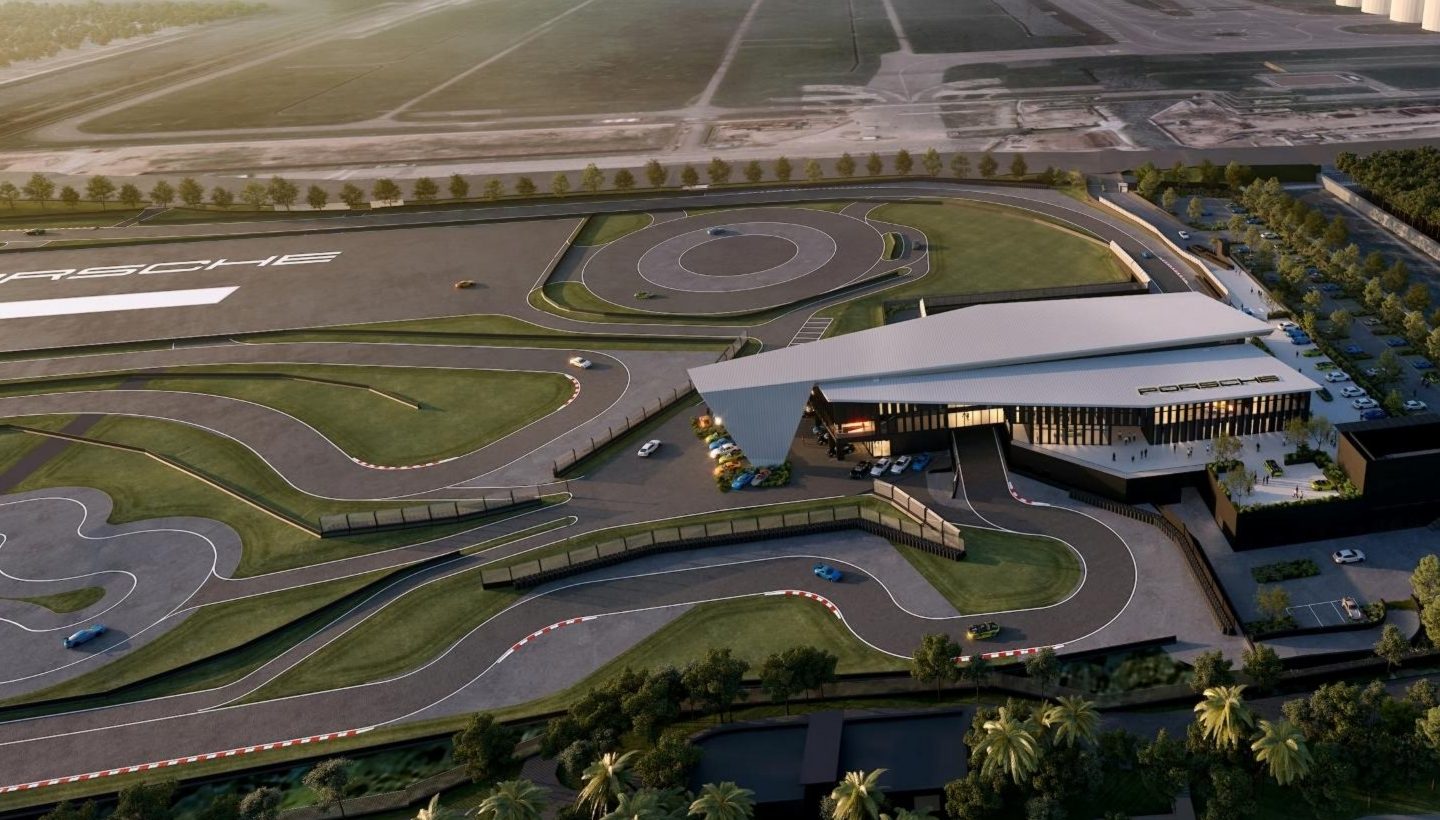The small island country of Singapore isn’t exactly known for its vast portions of spacious, unused countryside or curvy, uninterrupted backroads. Aside from a couple of reservoirs and airports, the entire main island is essentially a dense cityscape with tightly packed buildings, along with some areas of urban sprawl.
That means despite Singapore’s vast wealth and great taste in cars, there’s never been a permanent race track where owners could stretch their vehicle’s legs. The closest the country has gotten has been temporary street circuits. The first was the Thomson Road Grand Prix circuit, used from 1961 to 1973 to host Formula 2 races. It was shuttered due to safety concerns, and it wasn’t until 2008 that Singapore allowed another street circuit, the Marina Bay circuit, to emerge to host Formula 1 races (the latest race happened just last weekend; it was a fun one).
Once the race is over, the circuit is dismantled, and the roads are returned to the public, where they can be used as, well, roads. But that won’t be the case for Singapore’s latest track. Porsche revealed renders this week that show plans to build an Experience Center facility on a piece of land on the Northern end of the country’s airport, and it’ll include a road course—a permanent one.
When it opens in 2027, Porsche Experience Center Singapore will be the company’s 11th such facility worldwide, and the third in the Asia-Pacific region, joining facilities in Tokyo and Shanghai. These Experience Centers act as regional hubs for the brand, allowing current and prospective customers to try out cars, take delivery of their vehicles, get their cars serviced, or just hang out with like-minded Porsche-heads.


The company says the circuit will be over 1.2 miles long, and like other Experience Centers, will feature neat stuff on-site that’ll have you pushing the limits of whatever you’re driving:
The renders also tease other thrills: a technical double “S-curve” on the track that requires utmost discipline when keeping to the racing line, a dynamic handling area for learning emergency vehicle control, a low-friction handling track as well as drift circle for learning the basics of under- and oversteer control, and a banked corner where drivers can achieve up to 1.4 lateral Gs.
The facility also has what Porsche calls a “drive-through track experience” design, meaning part of the track passes through the building, which seems like it’d be pretty cool to experience from behind the wheel.
Don’t expect race cars to be lining up every weekend at PEC Singapore—like the company’s other facilities, this track will very likely be limited to single-file driving experiences, usually through lead-follow programs put on by Porsche itself. And if you don’t own a Porsche or plan to use one of the company’s cars, you probably won’t be allowed to drive on track. While that sounds a bit exclusionary, it is Porsche’s facility, so they make the rules.
No matter what you’re driving, the place seems like it would be a great place to spend time if you’re a plane enthusiast, seeing as how it’s literally right at the end of the Easternmost runway. I don’t pretend to know nearly as much about planes as our resident pilot, Mercedes Streeter, but I do know that Singapore Changi Airport is one of the busiest places in the world for air traffic, with all sorts of cool planes coming in and out of the facility daily. My personal favorite from the above video is the funky turboprop-powered, Dutch-built Fokker 50 flown by the Republic of Singapore Air Force, shown at around the six-minute mark.
Next time I have a layover in Singapore, I’m going to plan a longer layover so I can get a few laps in.









Oh jeez stop. There is one in Atlanta abutting the Runway.
As a former tv news photographer based in Seattle, that clip has some amazing camera work.
Here’s a fun bar bet… what’s harder on the tires? Takeoff or landing.
I’ll give you a second to think about it…
Ok… it’s takeoff. The plane has to get going fast enough to fly, carrying thousands, perhaps tens of thousands of pounds/kilos of more fuel. And the plane has to get up to flying speed to fly, while landing it is slowing down to where it doesn’t fly any more.
What about landing – impact and going from 0 RPM to 5000 in 0.1 seconds.?
The much heavier weight and higher takeoff speed is harder on the tires. The landing and the initial puffs of smoke are more dramatic, but not nearly as hard on the tires.
I would be fascinated to learn about any build requirements on the track/facilities based on their proximity to the airport. Obviously there would be height restrictions, but runways also have over-run distance requirements, specific places for ILS antennas, etc. and I wonder if any overlapped requirements or clever solutions came into play on the track/facilities design?
I think I found the exact location:
https://maps.app.goo.gl/QJAJDsAFBU6VYRnz7
This was particularly difficult because the airport in this rendering is somewhat correct, but not exactly (they show buildings/fuel tanks where there is currently just construction). And other older renderings are even worse. But the drainage canals and main runway seem to match well.
From the header image I thought this was going to be about the Porsche Mooney M20L PFM
Miss Mercedes should write that up, a fascinating story.
I remember reading about those in Flying magazine. I miss the writing of Peter Egan in that magazine, Road and Track and Cycle World.
You know the Atlanta Experience center is just off the end of the runway of Hartsfield-Jackson airport. They work well near airports as neighboring properties can’t complain about the noise the cars make on the track. I was involved in the planning and design of both the Atlanta and Carson tracks. On all their tracks they either have a trainer driver as a passenger in the car or do lead follow, no cars run concurrent. They are a great experience if you’ve never been on a track.
As a retired pilot of small aircraft, there was nothing more annoying than people buying homes near the airport that had been there for decades and was there when they signed the papers, suddenly complaining about the noise.
The airport where I learned to fly is now part of two subdivisions.
Some of the Singaporean articles when it was announced were focusing on Porsche bev and Singapores green push like the cooling of Sentosa. Singapore F1 is probably their biggest tourism draw they are looking to boost tourism after some down years everything is shifting in SEA. Just like VAG in Asia is shifting it would seem they are no longer on the top and are looking for an edge and a way to get people excited again.